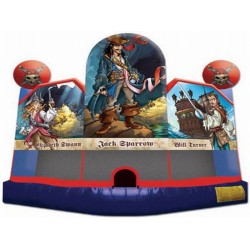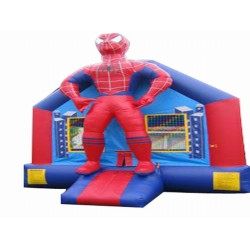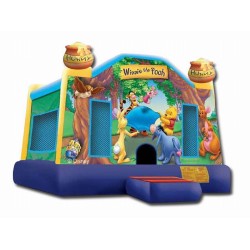Can a Jumping Castle Be Shifted While Children Are Bouncing?

Jumping castles provide endless fun for children at parties and events, but safety is a top priority when using them. One important safety consideration is whether a jumping castle can be moved while children are bouncing inside. This article explores the implications and risks associated with shifting a jumping castle during active play.
1. Safety Risks of Moving a Jumping Castle
Moving a jumping castle while children are playing inside poses several significant risks:
- Potential for Injury: Shifting the jumping castle while children are inside can cause instability, increasing the risk of falls and collisions. The sudden movement can lead to injuries as children may be thrown off balance or collide with each other.
- Damage to Equipment: Moving a jumping castle while in use can cause damage to the inflatable structure and the blower system. The constant shifting can stress the seams and material, leading to potential tears or malfunction.
- Loss of Control: Moving the castle disrupts the stable environment required for safe bouncing. The instability during movement can cause the structure to become uneven, further increasing the risk of accidents.
2. Recommended Practices for Safe Operation
To ensure the safety of children and protect the jumping castle, follow these best practices:
- Stationary Setup: Always set up the jumping castle in a stationary position before allowing children to use it. Ensure that the area is secure and that the castle is properly anchored and inflated.
- Supervision: Maintain close supervision while the jumping castle is in use. Ensure that children follow the rules and that there are no attempts to move or disturb the equipment while they are bouncing.
- Pre-Move Procedures: If the jumping castle needs to be moved, ensure that children are removed from the structure first. Only move the castle when it is completely deflated and the area is clear of participants.
- Inspect Before Use: Before setting up or moving the jumping castle, inspect the equipment thoroughly for any signs of damage or wear. Address any issues before use to prevent complications during play.
3. Alternative Solutions
If relocation or repositioning is necessary, consider these alternatives:
- Plan Ahead: Plan the setup location carefully to avoid the need for movement during the event. Choose a suitable spot that will accommodate the castle for the entire duration of its use.
- Use Multiple Units: If space constraints require movement, consider using multiple jumping castles in different areas. This way, one castle can be used while the other is set up or taken down without interrupting play.
4. Conclusion
Moving a jumping castle while children are bouncing inside is not recommended due to the significant safety risks involved. To ensure a safe and enjoyable experience, keep the jumping castle stationary once it is set up, and only move it when it is deflated and clear of participants. Proper planning and supervision will help maintain a secure environment and prevent accidents.



